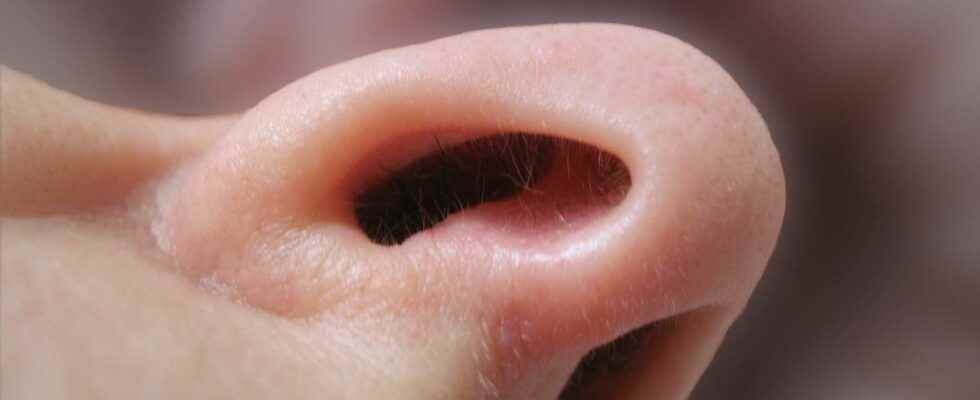The polyposis nasal polyposis, or naso-sinus polyposis (NSP) is the most common form of chronic rhinosinusitis, due to the development of polyps in the mucosa and the nasal cavities. It affects around 1 million people in France, i.e. 2.1% of the population according to Sanofi. The disease usually starts before the age of 30, but is often delayed diagnostic important.
Causes of nasal polyposis
Naso-sinus polyposis is due to the development of polyps on the lining of the nasal cavity and sinuses. Polyps are soft growths that are painless and non-cancerous, but can be invasive. They result from a inflammation chronic, the cause of which is unknown in 80% of cases. Nasal polyposis is sometimes attributed to theasthmaa allergydrug sensitivity (e.g., aspirin intolerance), or immune system. Some rare diseases as the cystic fibrosis where the syndrome Churg-Strauss disease (inflammation of blood vessels) can also lead to polyps.
Symptoms of nasal polyposis
Small polyps are asymptomatic, but larger polyps can obstruct the nasal cavity and prevent breathing. They also promote respiratory infections.
- rhinorrhea (runny nose)
- stuffy nose (difficulty breathing)
- posterior flow sensation
- headache
- facial pain in the forehead,eye or teeth
- loss of taste andsmell (anosmia)
- snoring
- Sleep Apnea
- asthma attack (on an asthmatic ground)
Nasal polyposis also has psychological repercussions: 57% of anosmic patients report having lost the desire to eat and 42% have already felt depressed, according to a 2021 Sanofi survey. Note that nearly 17% of patients suffering from polyposis nose also show a atopic dermatitis.
Treatment of nasal polyposis
Nasal polyposis is a disease that is difficult to treat definitively. Most patients resort to “natural” methods, based on seawater spray oressential oilsbut improving symptoms remains partial and transitory. Nasal polyposis can also be treated with nasal or oral corticosteroids, but on a duration limited to avoidside effects related to excessive use. From antihistamines or some antibiotics may be prescribed on a case-by-case basis.
According to Sanofi, 46 to 78% of patients will therefore need one or more surgeries, but the polyps very often recur after the operation. The latter consists of inserting a small tube (endoscope) in the nostril, to remove the polyps and to make an opening of the sinuses to facilitate the passage of theair.
In order to reduce the risk of recurrence, it is advisable to have good hygiene of the nose (regular washing with physiological serum), avoid substances that irritate the airways (allergenstobacco, dust…), to humidify the air in your home and treat your asthma if applicable.
You will also be interested
[EN VIDÉO] How much water is in the human body? Answer to this question: it depends! The proportion decreases during life, from 80% in the fetus to 50% in the elderly. Between the two, the adult woman retains about 55% and a man rather 60%. And inside the body, the amount varies widely depending on the tissue.
Interested in what you just read?
